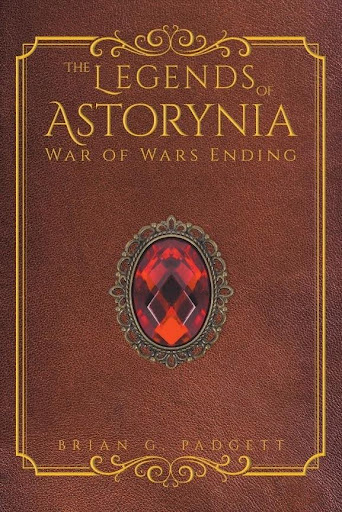When the wind stirs the leaves of the Weary Wood and the stars flicker above Edengrove’s torchlit streets, you know you’re no longer in our world—you’ve stepped into Astorynia.
When writing epic fantasy, worldbuilding is not merely background dressing. It is the breath and bones of the journey, the magic in the air, the heartbeat of every footfall on foreign soil. And Brian G. Padgett’s The Legends of Astorynia is a masterclass in how to do it right.
A World That Breathes with Culture and History
From the first steps of Keagle through the towering oaks of the Weary Wood, readers are immersed in a world alive with lore. Astorynia isn’t simply imagined—it’s engraved.
The Elves of Keldoron, with their bowcraft and regal cities, carry centuries of prestige and conflict in their veins. The architecture of Edengrove, the layered political tension with tribes from the South, and the haunting echoes of the War of Endings—these aren’t details tossed in for color; they are legacy.
Great fantasy worlds aren’t invented overnight. They are crafted, brick by brick, myth by myth. They grow from old wars, fractured alliances, and long-lost kings. Them thrive on whispered rumors, tavern songs, and ancestral grudges. In Astorynia, even the breeze carries memory.
The Terrain is a Character Too
Worldbuilding in Astorynia stretches beyond city walls. The Weary Wood hides whispers; the Sterling River gleams with secrets. Every location is lace with significance and tone, whether it’s the comfort of Edengrove’s glowing windows or the menace of the Shadowrock peaks.
Padgett’s landscape is sentient. That reacts. It harbors. That warns.
Aspiring worldbuilders take note: your map should not just be a list of destinations—it should tell a story. Let the land evolve with your characters. Let it challenge them, shelter them, reveal what words dare not say.
Language, Lore, and Names That Matter
Astorynia is rich in names that sound as though they’ve weathered centuries: Keagle of the Kelderling, Princess Teyallia Thellorus, and her Royal Guard Brombol Steinerman. These are heritage, and each name carries meaning, class, allegiance, or mystery.
The clever use of titles and lineage (The Goldeneagles, The Cloth, The Shielded Blades) helps readers orient themselves in a vast web of alliances and rivalries without exposition dumps. Instead, understanding unfolds naturally—one banner, one whispered warning, one jeweled headdress at a time.
When building your world, remember: a name is never just a name. It’s a glimpse into origin, destiny, and design. Use them to wield weight and whisper secrets.
Creatures and Races: Familiar Yet Fresh
While Astorynia introduces familiar archetypes—Elves, Gnomes, beastlike Gruflyn—it does so with distinction. The Gruflyn, for instance, are not your average “beastfolk.” They speak, snarl, snort, and reason with a culture all their own. The Vurkyn, scale-covered and terrifying, aren’t mere brutes; their history is steep in post-war exile and survival. Even side characters, like Binkerton, the Alderlands’ Gnome, carry enough quirks and conflicts to stand on their own.
Fantasy creatures work best when they’re not tropes but tributes. Give them philosophy. Give them politics. Let them feel the sting of exile or the pride of ancient empires.
Magic is Mysterious—And That’s the Point
Magic in Astorynia isn’t laid bare in textbook fashion. It creeps in through prophecy, glows faintly in the torchlight, flickers in the air when something ancient stirs. There’s a reverence around it—an understanding that magic belongs to something older, something divine.
You don’t have to explain every spell system or artifact. Sometimes, the most compelling magic is the magic that resists explanation. Let awe exist. Let mystery live.
The Legends of Astorynia teaches us that worldbuilding is a narrative engine. It shapes the plot, guides the characters, and raises the stakes. The more Keagle unravels about his world—from royal plots to monstrous invasions—the more the world reveals about him. It challenges him to become who he was destine to be.
When done right, worldbuilding becomes prophecy.
So, if you’re crafting your epic, remember: don’t just create a world. Create a world worth defending. A world worth longing for. A world that, like Astorynia, lives on long after the last page turns.
And if you ever find yourself beneath stars unfamiliar, listening to voices in the wind, perhaps you’ve wandered into a world built by love, legend, and a storyteller’s art.






